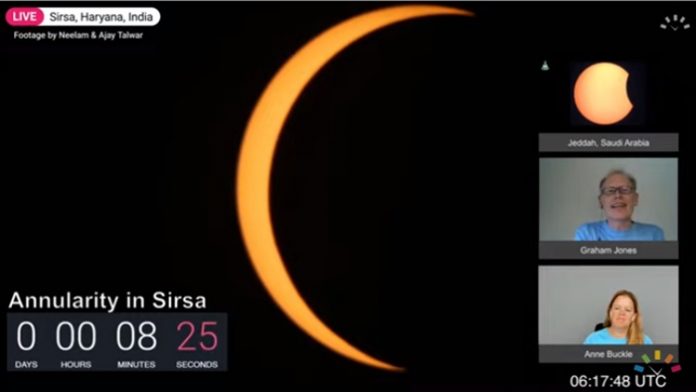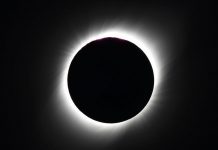June 22 (UPI) — A rare “ring of fire” solar eclipse was visible across parts of Africa, the Middle East and Asia on Sunday.
The annular eclipse, the first of two solar eclipses set to take place in 2020, produced a visible orange ring of sunlight around the Moon, viewable in a narrow portion of the globe.
An annular eclipse occurs when the Moon is farthest from the Earth, according to NASA.
“Though the Moon orbits Earth about once a month, its orbit is tilted by five degrees, so the perfect alignment that creates an eclipse is relatively rare,” said NASA. “Often the Moon is too high or too low in our sky to block out the sun.”
Northern India experienced a near-full solar eclipse with 99.4 percent of the Sun blocked at the peak of the event. Some portions of Europe and the Pacific also had a chance to view a partial solar eclipse depending on weather conditions.
“Locations far from the path of annularity will see only a small part of the Sun covered by the Moon, while places close to the path will see almost all of the Sun obscured,” NASA said.
The eclipse immediately followed the Summer solstice in the Northern Hemisphere on Saturday, during which the earth was tilted at its greatest angle with respect to the plane of its orbit, resulting in the longest stretch of daylight for the year in the hemisphere.
Time and Date streamed the eclipse live on YouTube, providing views from various parts of the world.





